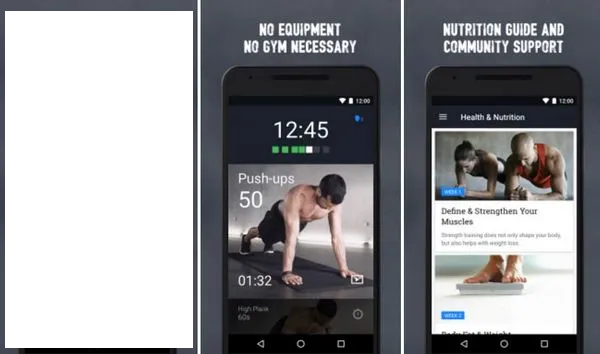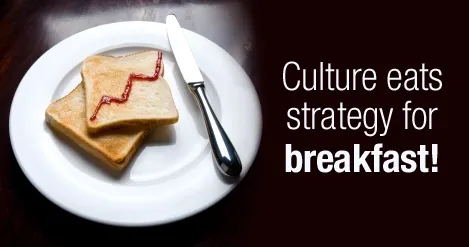

How to bring Transformational Change
...Sustainably within an organization.
Since the COVID 19 outbreak, this has been the central theme for companies during the lockdown and after unlock.
Incidentally, I experienced this during the 120 days of the Indian lockdown & unlock.
When the Honourable Prime Minister of India announced Phase 1 (23 March – 14 April) lockdown on 22nd March night, I went blank for few minutes. After I accepted the realities of the war-like situation - the enemy being invisible & there is a strong need to stay indoors, I asked myself.
What do you plan to do during the LOCKDOWN?
Internalize the Need

There are always two paths to choose from - a path of status quo or transformation. I could have chosen the status quo (the easier option) and then joked with friends & family that time just flew during the lockdown ended up adding a couple of kilos of weight. However, I felt it was the right time to focus on improving my health (which I have neglected over the years) and use this lockdown for bringing about that transformation.
Something leaders face on an ongoing basis - Should the organization remain at status quo (due to the fear of rocking the boat, being overwhelmed by the effort required etc.) or look at transforming the organization (especially during a crisis). The crucial aspect of an organization that takes up a transformation is not
- Well-planned initiative
- Adopting the latest tools and techniques
- Competent consultant/advisor
While the above points are components of change, the crucial aspect of change comes from a leader who has internalized the need for transformation and acts on it without any second thoughts.
Ideally, a leader been part of transformations in the past (even in a smaller capacity).
Start Small

Hence, on 22nd March night, I decided to take my 1st step towards health transformation. It was to do 50 Surya Namaskars every day for the next 21 days without any excuse. Done every day in the morning before I take up any other task. Why Surya Namaskar? For years, I had heard how it was the complete workout for the body and mind. About five years back, it used to be my warmup exercise before the daily 5km run.
When leaders attempt to make a transformative change within their organization, especially for the 1st time, it is advisable to take small but transformative steps towards change. Take up one project (and if there is bandwidth, more) that is simple to implement and is impactful.
Initiatives such as Rolling out 5S, realigning SOPs to business realities, introducing suggestion schemes for employees, training the entire organization on 7QC Tool have an organization-wide impact.
Many leaders underestimate the power of a simple initiative.
Stay Committed
Now, the 1st experience of 50 Surya Namaskars was a tough one.
- Not more than five reps at one go.
- Not proper asanas or breathing technique.
- Terrible body aches by evening.
As I went to bed and prepared myself for the next day, I had thoughts in my mind - Is it worth the effort? What if I am causing more harm than good? Hence, before the next day session, I read up on various benefits of Surya Namaskar (which I knew but wanted to reassure myself) and went through at least three videos on how to do Surya Namaskar correctly.
Similar such doubts are faced by leaders when they embark on an organization-wide transformation journey. The intent and start might be good.
However, they get strong push back from their team -
- What is the need?
- Why now?
- Not for our industry or our kind of setup?
- It is not beneficial.
- Look at the damage it has already caused!
Hence, leaders need to constantly educate themselves (with an outside-in perspective) w.r.t the transformation that the organization has takeup. Such an effort will help understand if it is worth the effort? Is it causing more harm than good? More importantly, provide reassurances - it gets lonely on the top - leaders are human as well.
The need for validation before moving ahead is natural.
Place Anchors
By the end of the 7th day of 50 Surya Namaskars, I had developed the following Change Anchors:
- A fixed time & location to do the Surya Namaskars - 7 am and no stepping out of my room until completion.
- Measured my body weight as a measure of success - every day at 11 am (Didn't believe in weighing myself on an empty stomach. Feared that I might give myself an excuse to skip a session if the weight loss is higher than what I had expected)
- A song that helped me associate my transformed endstate - healthier, fitter and more confident individual

For reasons unknown to me, the song Ghungroo from 2019 hit Hindi Movie WAR helped me associate my endstate.
It was played before every day so that I do not back out.
For any transformational change to sustain, the leader needs to ensure change anchors are in place within the organizational system. For eg
-Arrive at a communication model. It can be part of
- Daily morning WhatsApp message,
- e-Mail signature.
- Weekly review meeting context setting,
- In the quarterly town hall closing session
-Leaders need to take the team through the importance of the transformation, its advantages, learnings during the implementation and the support required from the team to make it successful.
- Ensure short-term success do not derail the long term plans of the transformation.
- Identify an anchor image for the end state of the transformation and share it widely across the organization.
A picture is worth a thousand words.
Introduce Incremental Transformations
By the 15th day, I was confident that I could include a few more tasks in my daily routine as I progressed in my health transformation journey:
- Researched intermittent fasting and felt 16:8 fasting was possible as for many years, I have been following 14:10 fasting. Hence, from day 16 onwards, intermittent fasting was part of the daily routine. While it was an extra 2 hours of fasting, it was not easy! The mind over matter challenge is food-related rather than exercise for me. However, I finally managed it by the 21st day.
- After completing 21 days of 50 Surya Namaskar, I designed my daily exercise routine based on my learning
- Not like to exercise beyond 30 mins at a go.
- Enjoy variations in my exercise routine.

Hence, a day had two sessions i.e. 20 mins in the morning and evening, five days a week (without any excuse). The sessions included Yoga, HIIT & Weights.
I did try to add running to the mix (something I had not done after two ligament tears in 2017) but stopped after my knee troubled me for two consecutive days.
Studies suggested that exercising five days a week is better than seven days a week as the muscles need time for recovery. For HIIT workout, I took the help of an app called Adidas Training. I enrolled for its 12-week challenge and made that the next milestone in my transformational journey.
Change management is glacial and an uphill task. We need to celebrate success (however small) with the team and plan for new incremental transformation projects that take the journey forward. These projects build on the foundation of earlier success & learnings.
In case technical expertise is missing within the organization, external advisors/consultants can help. However, leaders need to put in place control systems that can alert the negative impact (in the immediate, medium and long term) due to these projects.
Avoid having projects for the sake of change.
Have Relatable Support
The app provided a closed group community from Bangalore, India & across the globe to interact and kept each participant motivated by providing an option to share their progress via the app.
To ensure completion of the 12-week program as per my daily routine, I felt if I could interact with individuals to whom I could relate, it will be helpful - close friends and family on this challenge.
Understand their highs & lows of the challenge while motivating myself to remain on the path to complete the 12-week program.
James Clear (NY Best Seller Author) put it so well.
Humans are herd animals. We want to fit in, bond with others, and earn respect & approval of our peer's social connection. It is more helpful to us than understanding the truth of a particular fact or idea.
As luck would have it, I received a coupon code on 3rd week of my 12-week program. This coupon enabled my contacts to enrol for free. Five of them did. The conversations with them were very insightful & Relatable. Six of us were from similar background w.r.t time commitments and age. At the end of this challenge, I was happier that one of them even completed the 12-week program along with me.
It is helpful if leaders periodically exchange notes of their transformational projects with peers (within the organization or industry or adjacent domains) for insights on how to manage the lows and sustain the highs. The trust between individuals who share their experiences needs to be very HIGH.
Many times, approaches are understood better from other's experiences rather than re-inventing.
Stay Hungry
By the end of the 12-week transformation program, I had lost 8 kilos, 2 inches of my waist and improved physical stamina - I was able to do 25 Surya Namaskara or 20 Burpee at one go. I could have stopped at this point, as Unlock 1.0 was declared and could have gone back to my pre-lockdown routine. However, I realized good health is a journey that never ends - I need to keep finding new milestones or challenges.
Similarly, leaders need to push the agenda of transformative change within the organization. Transformative leadership is a journey that helps an organization to evolve into a better version of itself.
Leaders should not stop on account of achieving a transformative milestone. Yes! Teams have pushed themselves for that milestone and will assume there is nothing more!
Leaders need to navigate during tricky times and ensure teams remain motivated enough to take up the next set of transformative milestones.
Build Culture
The next set of milestones in my health transformative journey is to
- Add 4 kgs on account of Muscle Gain (in the next four months)
- Obtain that elusive four-pack (by the end of 2021)
To achieve this, it is not exercising where I need to be innovative and consistent but DIET - a component that I have missed out on so far. A good diet fuels the body and brings about transformative change to wellness. Hence, I have signed up with Healthify app and looking forward to following their customized diet plan for me on this journey further.

The quote coined by Peter Drucker remains timeless i.e. "Culture eats strategy for breakfast. To truly experience the benefits of transformative change, leaders need to build a culture of accepting change.
You will notice that transformative projects either fail or never achieve the intended results when organization culture is the weakest link within the organization,
Leaders need to look at every given opportunity to build a transformative culture within the organization. Be it while selecting new joiners, during their induction and while coaching existing employees on performance.
Now to summarize my journey so far... For any transformational change to be sustainable, We need to
- Internalize the Need
- Start Small
- Stay Committed
- Place Anchors
- Introduce Incremental Transformations
- Have Relatable Support
- Stay Hungry
- Build Culture






